This story was written by Belizean multimedia journalist Marco Lopez. It was published with the support of the Caribbean Climate Justice Journalism Fellowship which is a joint venture between Climate Tracker and Open Society Foundations.
On the Belizean island of Caye Caulker, Allison Ifield is affectionately called “Mangrove Mama” due to her connection with mangroves and unrelenting determination to protect them.
While she was born and raised in Canada, Ifield first visited Caye Caulker in the late 1990s and decided to relocate to the island after developing a love for its natural heritage.
As she learnt more about the island and its mangrove ecosystems, Ifield became interested in not only educating others about them but also volunteering to upkeep their beauty.
In addition to becoming a tour guide, she would often randomly plant mangrove seedlings wherever she could and care for them.
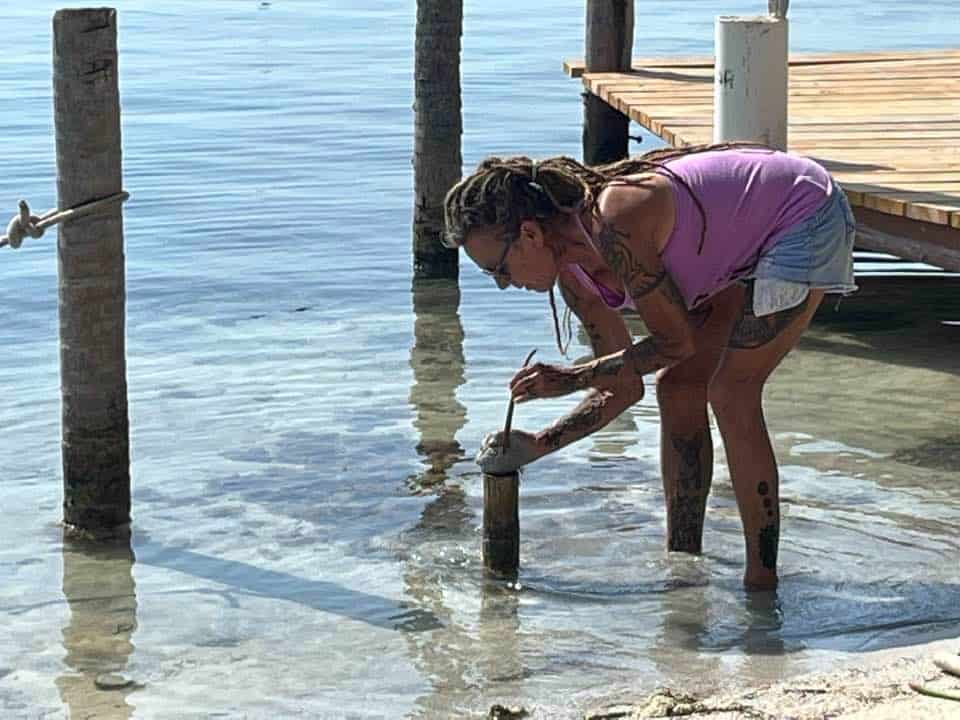
While Ifield initially didn’t plan to start a mangrove restoration project, this all changed around 2018 when she saw mangroves on the island – including the ones she planted – being cleared.
She told Cari-Bois, “We came around the corner one day, and I saw some of the trees that I had planted 15 years before were cut down.
“I swore, “This is it, man, I’m gonna give up tour guiding” (and go full time into mangrove restoration).”
Making the decision to leave her job as a tour guide, Ifield committed to supporting mangrove restoration on the island and got support to start the Caye Caulker Strong Mangrove Project.
Since then, this nature-based solution to protect the island’s mangroves, and contribute to the island’s climate resiliency, has become a sense of duty to Ifield.

From being a tour guide to becoming “Mangrove Mama”
With the assistance of volunteers, Ifield has been able to plant hundreds of mangrove trees thus far on a private portion of beach – which was leased by a resident – in Caye Caulker.
As her efforts have increased, news of Ifield’s work has also received more attention and she has seen support for her efforts increase.
Affectionately getting the nickname “Mangrove Mama,” she explained, “In 2020, I got the opportunity with the MAR Alliance and the Denver Foundation to do the Caye Caulker Strong Mangrove Project, which I originated.
“It was meant to employ people during the covid19 pandemic and also work with restoration.”
The project has also received support from local businesses.
Through a partnership with the World Wildlife Fund and the PEW Charitable Trusts, Ifield has also served as a facilitator with the responsibility of teaching others the intricate techniques of mangrove planting.
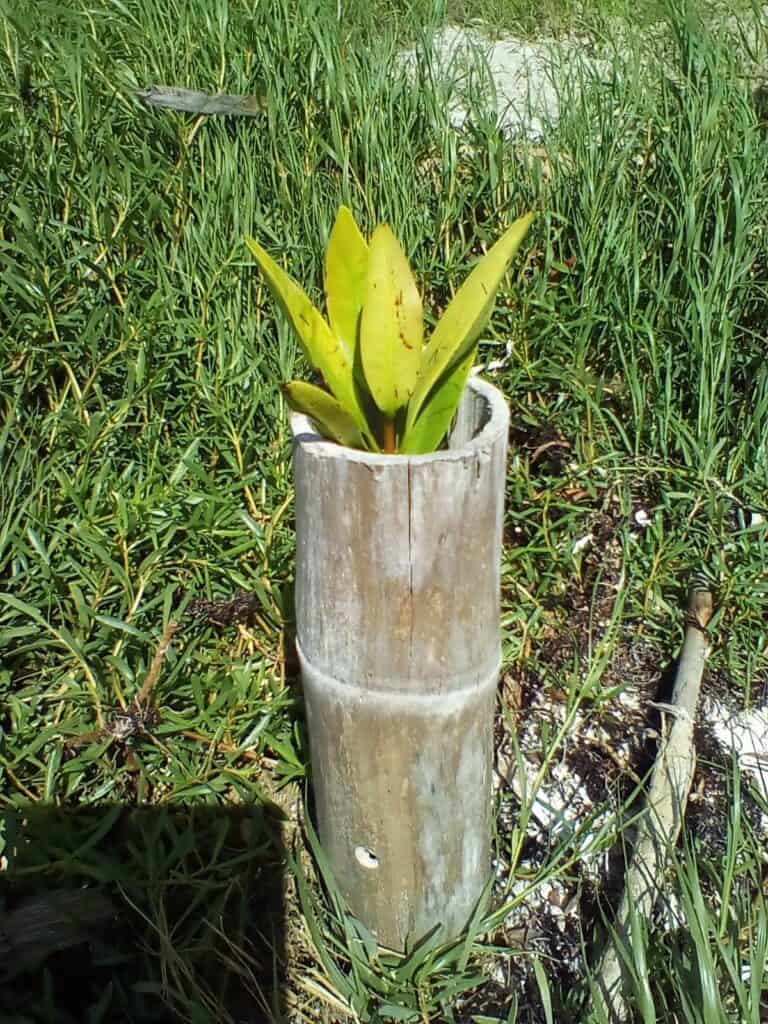
Over the past several years, Caye Caulker has seen an influx of developers who have constructed new resorts and hotels.
In some cases, mangroves have been cleared to facilitate these development projects.
But clearing mangroves can have ripple effects as they provide many key ecosystem services which therefore makes mangrove restoration work pivotal to Caye Caulker’s future.
Ifield explained, “We (Caye Caulker) are a high-impact weather event island,”
“We have a lot of rain runoff because no one is collecting rain anymore, so there are no gutter systems, and everyone is cutting down their green, which used to suck up the water.
“We’re not only getting rain wash erosion, but we’re also getting high impact wave erosion on the other side because we’ve removed all our mangroves and continue to do it with impunity.”

Belize’s mangrove regulations
In Belize, a landowner must receive a permit from the Forest Department to remove or make any alteration to mangroves.
Landowners are mandated to undergo an application review, cannot remove more than 50% of mangroves along the waterfront, and must erect a sign indicating approved mangrove “alteration” or “selective trimming” is in progress.
Nadia Bood, Belize’s Senior Program Officer at the World Wildlife Fund (WWF), told Cari-Bois that these regulations aren’t effectively enforced.
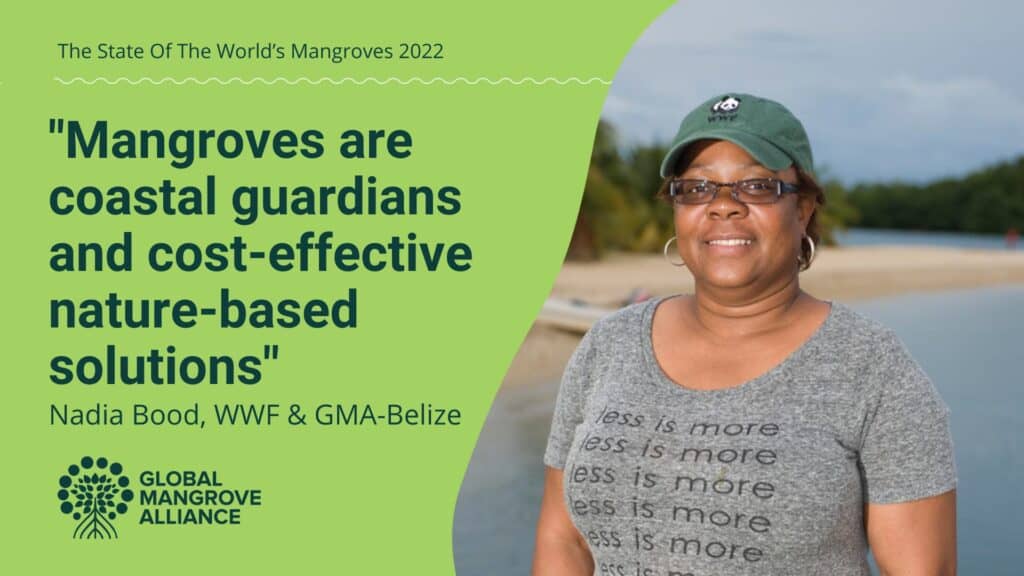
Bood explained, “Much more can be done. The Forest Department has been issuing permits for mangrove clearance but there are stipulations within the mangrove regulation that the land owner that gets that permit should follow.
“For example, if they are given a permit to clear mangroves on a particular piece of land, the mangrove regulations call for that developer to put a 4×4 sign with a waterproof copy of the permit affixed
“That will signal to community members, or anybody who may come across a particular clearance of mangrove, to understand whether that developer or that particular landowner has the necessary permit to do the clearance, so something simple as that is not being followed by the developers.”
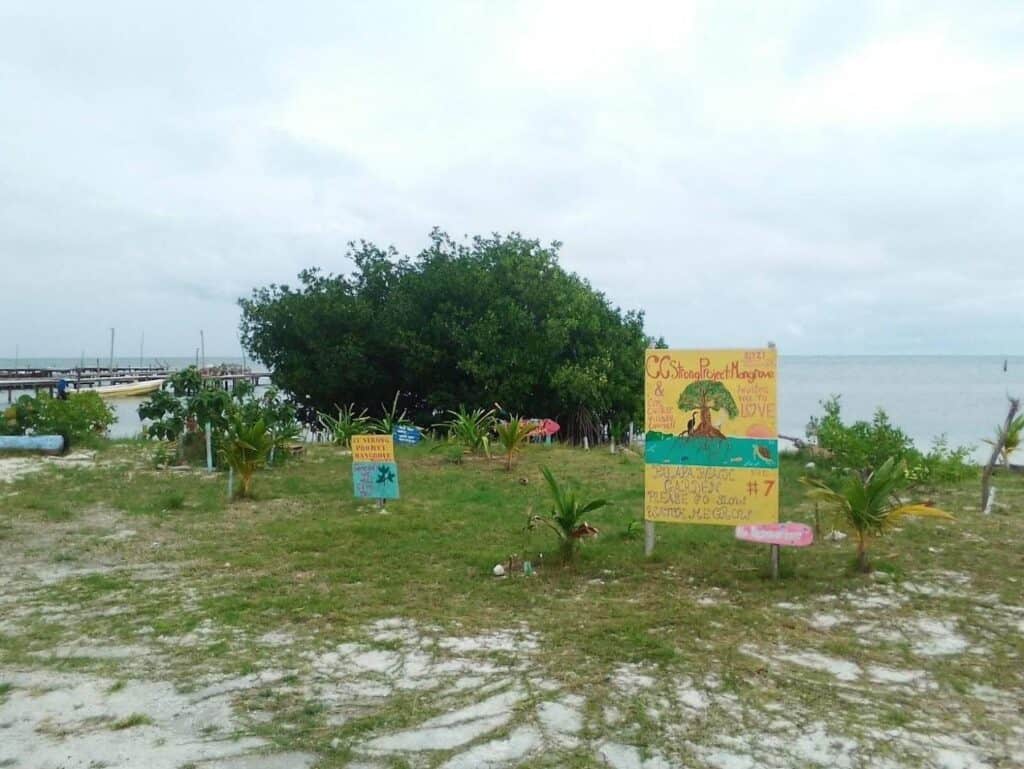
Bood shared that Belize’s Forest Department has said that they “are a little (cash) strapped to be able to monitor and enforce the full breadth of the Belizean Coastal Zone” which includes Caye Caulker.
She added, “There is no Forestry (Department presence) here, there is Fisheries.
“But you know, they are out at the reef, there’s no Forestry, there is no man on the street, there is nobody here to give something as reported.
“The police can stop (illegal clearing of mangrove) but it’s really difficult, and then it’s difficult to prove.”
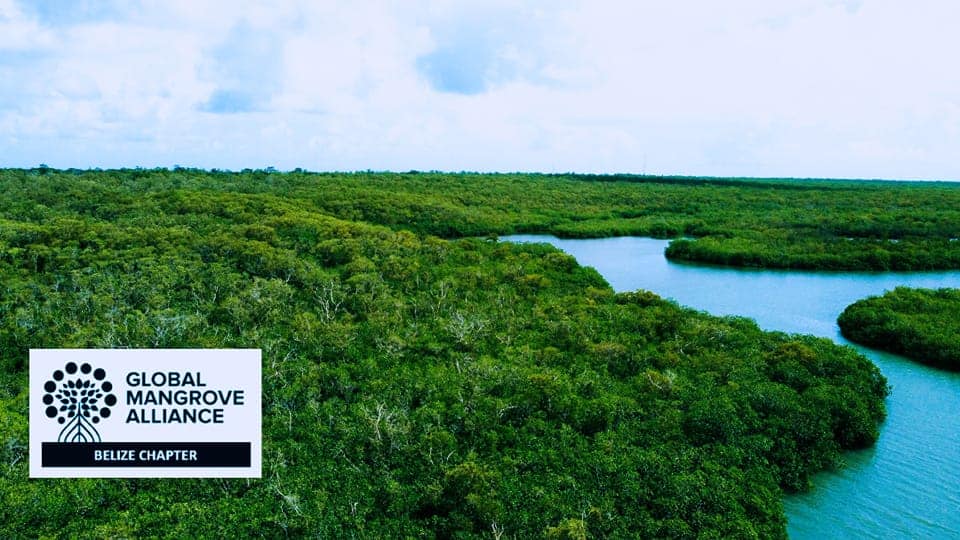
Bood explained the Belize Mangrove Alliance, of which Ifield is a member, has begun working with local communities to help ensure that reports from the ground are filtered up to the Forest Department.
She added, “We’re not seeing that happening. The Forest Department says that if they are to effectively penalise a land owner, or a land developer for infringing the regulation, they need to have that capture real-time at that point for them to have a successful legal case against them .
“So that is a disconnect right now. Something has to be done to strengthen those processes.”
She further explained that her organisation has been working with the Forest Department to create a formalised watchdog system so communities can effectively make reports.
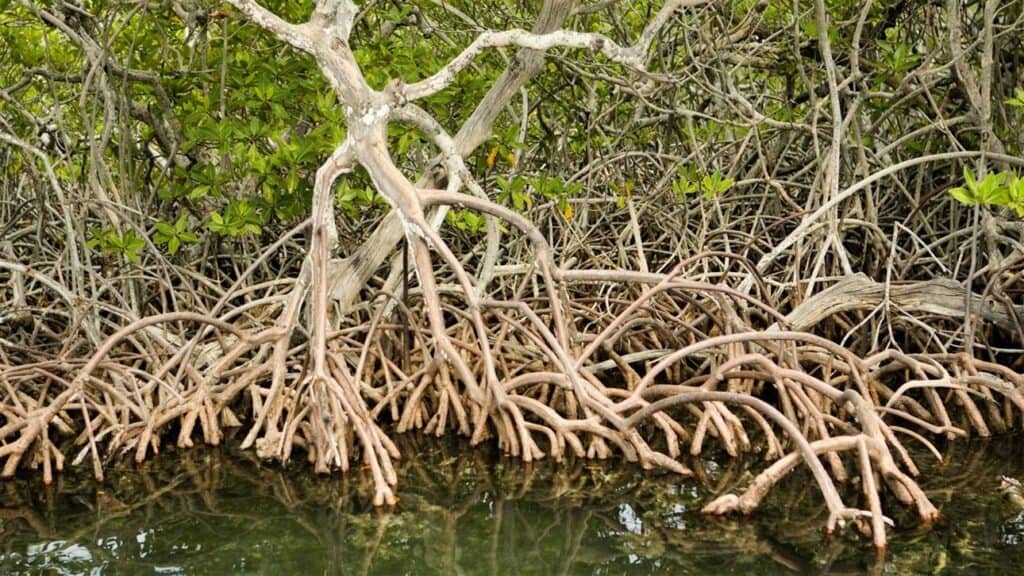
Belize’s mangroves are worth blue carbon credits
In Belize’s 2021 Nationally Determined Contribution (NDC), the country outlined its intention to further tap into the blue carbon market to meet its low-carbon development strategy.
A study by the Smithsonian Environmental Research Centre revealed that mangroves are blue carbon sinks with four to five times the carbon sequestration capacity of tropical forests.
The study’s findings also estimated that Belize’s 58,000 hectares of mangroves store approximately 25.7 million metric tons of carbon which can generate significant blue carbon credits that can yield economic benefits to Belize.
It’s important to note that Belize has signed onto the second largest Blue Bond to date and benefits from a significant national debt restructuring in return for commitments to protect 30 per cent of the country’s marine space.
While Ifield said the country’s commitments and pledges are a good starting point, she is now calling on authorities to prioritise greater action.
“If we really are serious about our Blue Bond commitment, there have to be boots on the ground now in Caye Caulker. This needs to turn around seriously, I am tired of this playing around, all this talk, let’s start the action part of the whole thing.”
Allison Ifield, Conservationist with the Caye Caulker Strong Mangrove Project
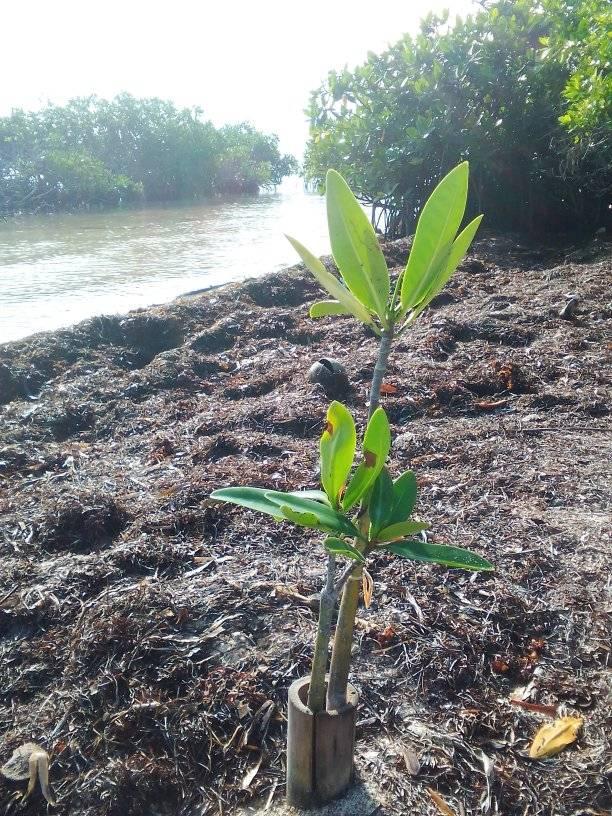
As an official at the Landscape Restoration Desk, Minerva Gonzalez told Cari-Bois that the department does not have a physical presence in Caye Caulker but visits sites considered hotspots.
At present, the department does not do measurements and monitoring of small-scale mangrove restoration efforts but Gonzalez said it is something they intend to begin.
She added, “Restoration will not happen overnight, so monitoring is key to determining success through mortality and socio-environmental benefits received.”





